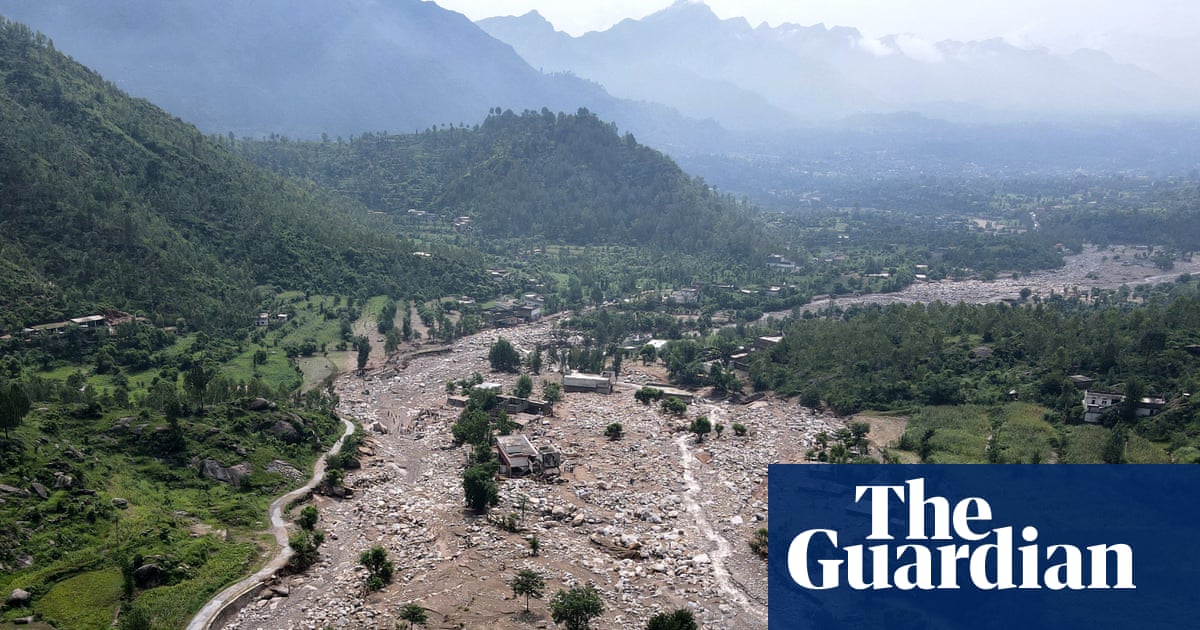Heavy monsoon rains have continued to pummel the Indian subcontinent over the past week, bringing devastating flooding and landslides and leaving hundreds of people dead in what has already been one of the deadliest monsoon seasons in recent years.
Moist air surging inland from the Bay of Bengal and the Arabian Sea was driven into Pakistan and north-west India late last week by strong southwesterly monsoon winds. Combined with developing areas of low pressure, this triggered a succession of torrential downpours.
Last Friday more than 300 people were killed after cloudbursts – episodes in which hourly rainfall exceeds 100mm – struck mountainous regions of northern Pakistan and India. In Buner district, in Pakistan’s Khyber Pakhtunkhwa province, 150mm was recorded in just one hour. The downpours unleashed destructive flash floods that swept through valleys and villages carrying rocks and debris.
More than 240 people were killed in that single event alone, making it the most catastrophic episode of the season so far. Since the onset of the monsoon in late May, Pakistan’s National Disaster Management Authority estimates that nearly 750 people have died.
Farther south, Mumbai also endured extreme rainfall over the last week. Between 15 and 19 August, parts of the city recorded 837mm of rain – comparable to the annual average for southern England – leading to widespread and prolonged flooding. At least 21 people were killed, among them a man who was electrocuted after wading into flood waters containing a live wire.
Transport was severely disrupted, with roads waterlogged, train services halted leaving hundreds stranded on platforms, and numerous flights cancelled or diverted. With the Mithi River close to bursting its banks, hundreds of residents in low-lying neighbourhoods nearby were evacuated to higher ground.
Elsewhere, the heatwave that gripped much of Europe for more than a week has finally broken, replaced by severe thunderstorms. On Wednesday and Thursday about 500,000 lightning strikes were detected across the continent, most of them over southern France, Italy and the Balkans.
Italy bore the brunt of the storms, which were fuelled by an area of low pressure moving in from over the unusually warm Mediterranean, allowing moist unstable air to clash with the hot air mass that had built during the heatwave. Downpours from the storms triggered landslides, uprooted trees and blocked roads, and in Sicily rivers burst their banks, sweeping away cars. One person remains missing.
